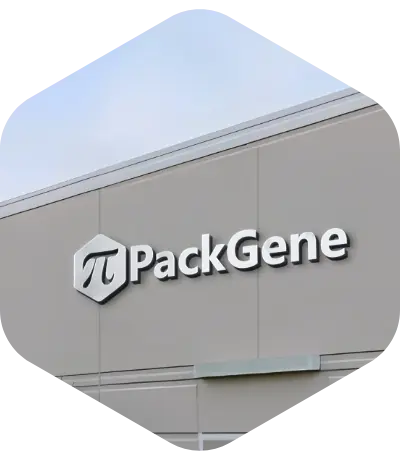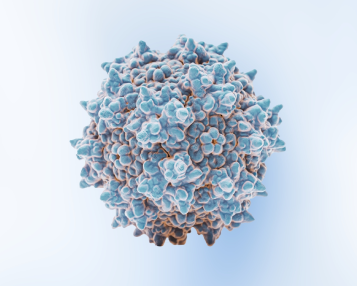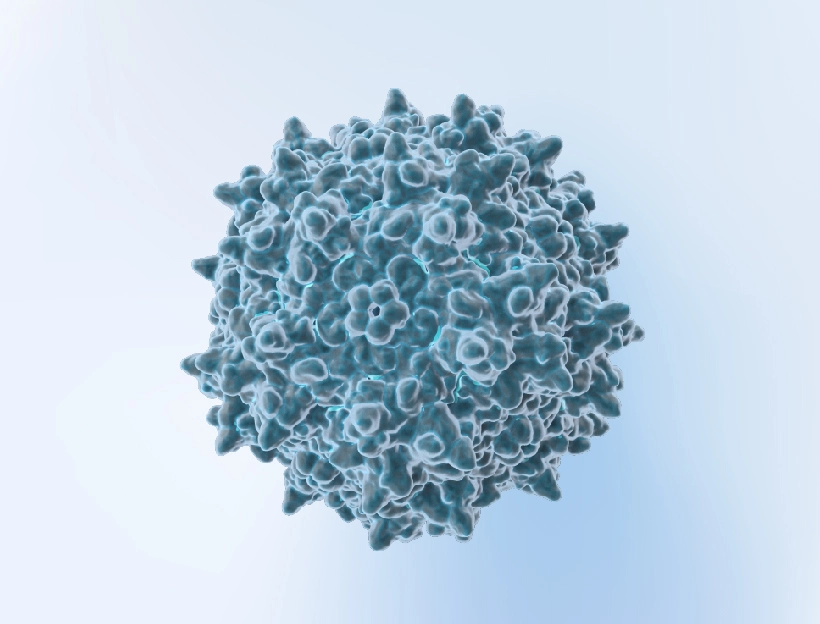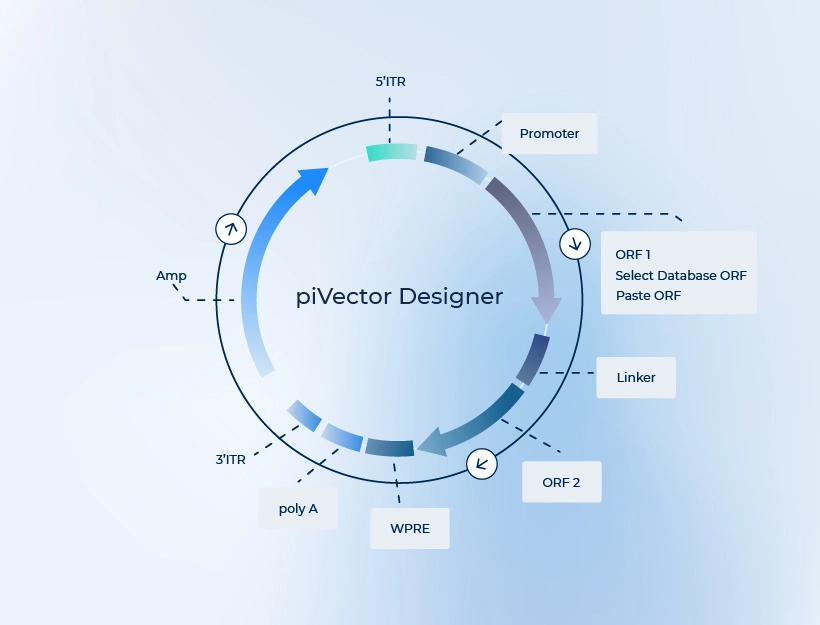
The principles and advantages of constructing self-complementary double-stranded AAV (scAAV)
Recombinant adeno-associated virus (rAAV) serves as a gene delivery vector in vivo, where the necessary condition for transcription to proceed is the conversion of the genome sequence from single-stranded AAV (ssAAV) to double-stranded AAV. When it comes to the expression of target genes, self-complementary AAV (scAAV) does not require this single-to-double strand conversion, thus allowing for shorter gene expression times and higher expression levels compared to ssAAV. However, the main drawback is that scAAV can only carry half the length of the gene load compared to single-strand AAV. Given rAAV’s excellent performance in preclinical gene therapy research, it is likely to see widespread use in clinical studies in the coming years.
scAAV contains a reverse-repeated genomic sequence that can fold into dsDNA without the need for DNA synthesis or base pairing between multiple vector genomes. scAAV is suitable for delivering small protein-coding genes (up to 55kd). Depending on the tissue, cell type, and administration route, scAAV vectors can significantly enhance gene expression efficiency. This article elaborates on the principles and advantages of constructing self-complementary double-stranded vectors.
The issue with single-strand genomes is that the viral transduction efficiency per transduction unit typically ranges between 25 and several hundred vector genome particles (VGP) depending on the cell type. Studies of the AAV transduction process have shown that the conversion of single-strand DNA (ssDNA) vector genomes to double-strand DNA (dsDNA) is the rate-limiting step in gene transduction. After completing the dsDNA conversion, there is a brief period of instability in the vector genome, leading to reduced gene expression efficiency. Each biological process can affect the total amount of VGP required for successful vector transduction. Regardless of whether in single or double-strand form, any rAAV genome that reaches the cell nucleus needs to synthesize or recruit a complementary strand for gene expression, a key step effectively bypassed by scAAV.
Like all parvoviruses, the AAV genome is packaged as a linear ssDNA molecule, with inverted terminal repeats (ITRs) at both ends forming hairpin structures that serve as primer binding sites for host cell DNA polymerases. In the efficient replication process of AAV, DNA polymerase delta and related replication factors are essential for the synthesis of active DNA. Traditional AAV replication schemes require de novo synthesis of complementary DNA strands, but an alternative mechanism exists, such as base pairing between the two complementary strands from the virus, accomplished through strand annealing (SA) or hybridization. Unlike many parvoviruses, AAV forms both positive and negative strand DNA with equal efficiency, increasing the likelihood of dsDNA formation with increasing doses, following second kinetic principles. scAAV completes the double-strand formation process in this manner. However, host recombination factors may play a significant role in facilitating SA, adding complexity to predicting AAV transcription efficiency in specific cell types. In addition to SA, other second kinetic interactions participate in rAAV genome interactions, including end-to-end linking to form concatemers and homologous recombination between overlapping regions among co-infected vectors. Thus, when enough viruses are present to promote base pairing, SA is highly likely to participate in rAAV transcription. However, studies indicate that DNA synthesis is the primary contributor to AAV transduction. Various host cell treatment methods can enhance the efficiency of dsDNA conversion, including co-infection with adenovirus (Ad), DNA-damaging agents (ultraviolet or γ radiation, hydroxyurea), and specific inhibition of host cell factors that bind to the AAV 3′-ITR sequence, but these methods are unlikely to be used in clinical gene therapy. γ-irradiation directly causes DNA double-strand breaks, while hydroxyurea and ultraviolet radiation induce replication stalling, leading to double-strand breaks in dividing cells. These treatment methods may exacerbate the genetic toxicity of the vector. Another possibility is the use of genotoxic drugs in anti-cancer gene therapy targeting tumor cells to promote dsDNA conversion and clear the targeted cells.
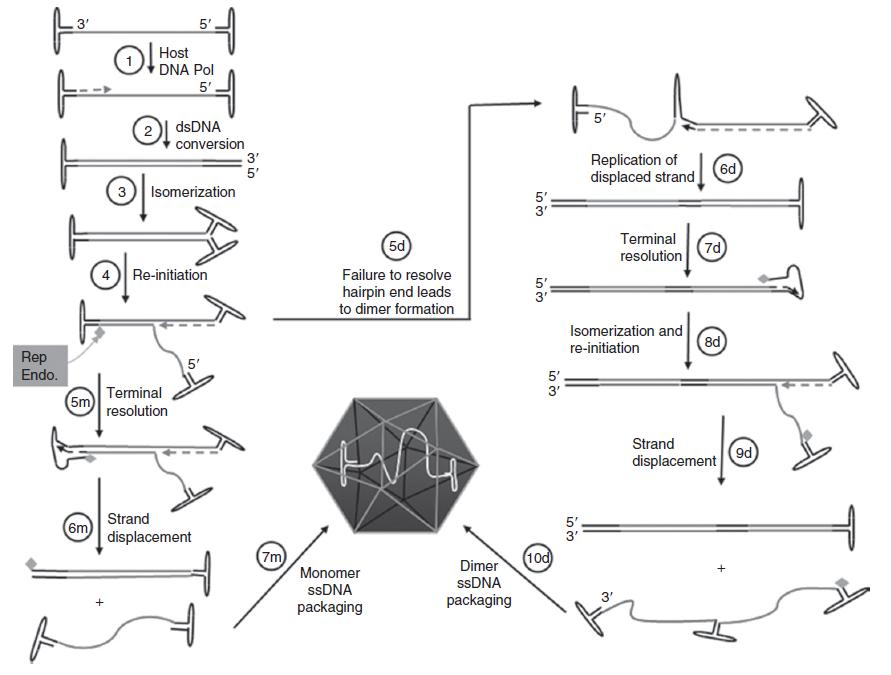
Ref: Douglas M McCarty. Self-complementary AAV Vectors; Advances and Applications. The American society of gene therapy. 2008
About PackGene
PackGene Biotech is a world-leading CRO and CDMO, excelling in AAV vectors, mRNA, plasmid DNA, and lentiviral vector solutions. Our comprehensive offerings span from vector design and construction to AAV, lentivirus, and mRNA services. With a sharp focus on early-stage drug discovery, preclinical development, and cell and gene therapy trials, we deliver cost-effective, dependable, and scalable production solutions. Leveraging our groundbreaking π-alpha 293 AAV high-yield platform, we amplify AAV production by up to 10-fold, yielding up to 1e+17vg per batch to meet diverse commercial and clinical project needs. Moreover, our tailored mRNA and LNP products and services cater to every stage of drug and vaccine development, from research to GMP production, providing a seamless, end-to-end solution.
